Nothing motivates learning like understanding:
Moving forward in these investigations requires understanding of the relationship between etymology and morphology.
Rejecting the flawed analyses of <wisdom> and <please> opens the door to deeper understanding of the spelling system, and how to investigate the structure and meaning of countless words.
The rest of this page offers guidance for what is available to learn about the spelling system by following the trail signaled by the questions raised by investigating these two words with word sums. The goal of understanding these spellings makes it necessary to establish a number of orthographic concepts and terms. The need to understand these concepts could be illustrated by an almost countless number of words. I chose these two simply due to the fact that it happened to be investigating these words that launched my own understanding that I am sharing here.
What do we draw on when we don’t have evidence to resolve a tempting word sum?
The evidence is that these word sums DO NOT work, so if we accept the principles of scientific inquiry, we can’t conclude that these word pairs are morphologically related by a base element.
However, their similar meanings and spellings DO mark an etymological relationship.
In order to answer such questions it is necessary to develop an understanding of how to draw a clear distinction between words that are of the same orthographic morphological family (those that share a base element) and those that are of the same etymological family, but do not share a base element (those that share a root but not a base element).
(Note: the term “element” in “base element” denotes a written base rather than a spoken base.)
One problem facing teachers trying to make sense of such questions is the common confused use of the term “root” to refer both to morphological and etymological relations. This page shares a variety of resources to help teachers bring clarity to these concepts, and terms.
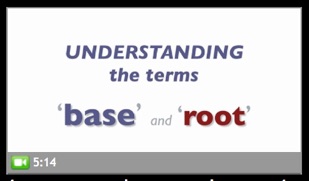
Perhaps the richest start would be to click this link to the “General” Album of the Real Spelling Gallery on Real Spellers so that you can watch the tutorial film pictured at right on the terms ‘base’ and ‘root’.
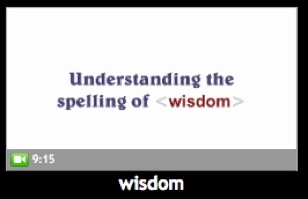
Real Spelling Film on the Spelling of <wisdom>
If you subscribe to the on-line Real Spelling Toolbox 2, you can go to the “Word Studies” Album of the Real Spelling Gallery to see many more films including the one on “wisdom” with analysis of this word that will take you through these key concepts.
As an aside, this film is an updated version of the film the Old Grouch built in response to a correspondence between a teacher friend and I looking at this word <wisdom>. I’ve included that early correspondence below.
The “structure and meaning test” is a frame that I use to help teachers address the question of whether or not any two words belong on the same matrix. Go to this link to read a short description of what this “test” means and the steps it reminds learners to take when taking on such a question. That page also includes an activity (pictures at right) I designed for a class to practice applying this “test”.
It shouldn’t surprise that the word sum is the means of conducting the “structure test” and finding the etymological family of a word is how the “meaning test” is conducted.
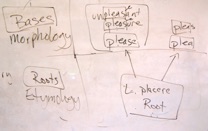
Below, I have pasted two pages from my teacher resource book that help to clarify the crucial distinction between morphological and etymological relatives. This diagram started on a white board (pictured at right!) during a workshop in Ghana when teachers were asking for help with this exact question. See this old WW Newsletter for more on that story .
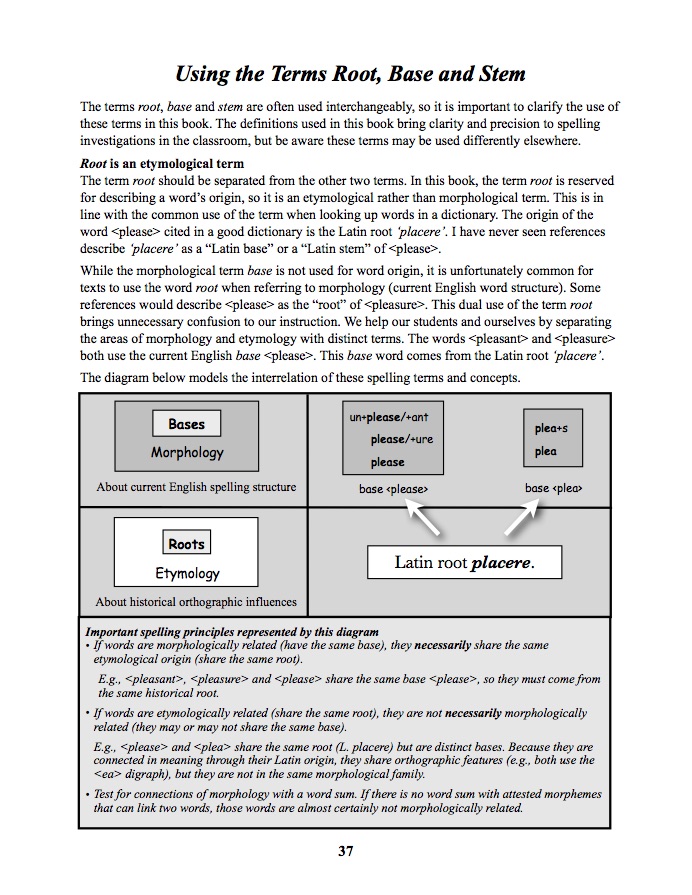
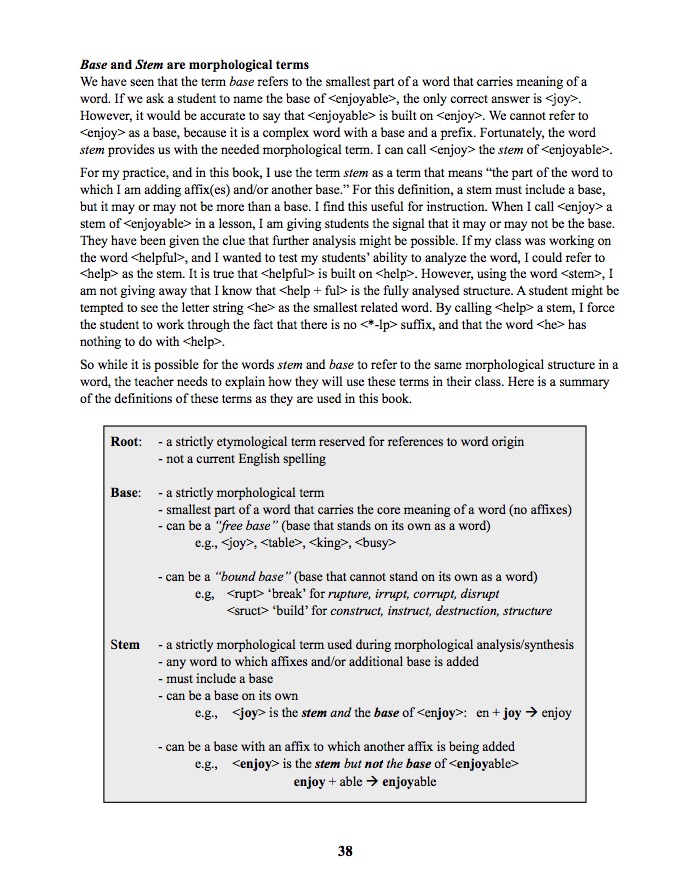
A look back at my own early encounter with this question
I suggested earlier that these types of questions always come up with teachers seriously investigating structured word inquiry. In fact, it amazes me how often it is specifically the words <wisdom> or <please> that spark this journey into understanding the interrelation of morphology and etymology.
At this link you can download a pdf of with a correspondence I had with a teacher (my sister-in-law Sally!).
You will see from my response that I was still developing my understanding about these concepts at this point. I am pleased to see that even though I did not know the full answers to these questions -- I did know how to share my thinking without drawing conclusions deeper than I could demonstrate.






